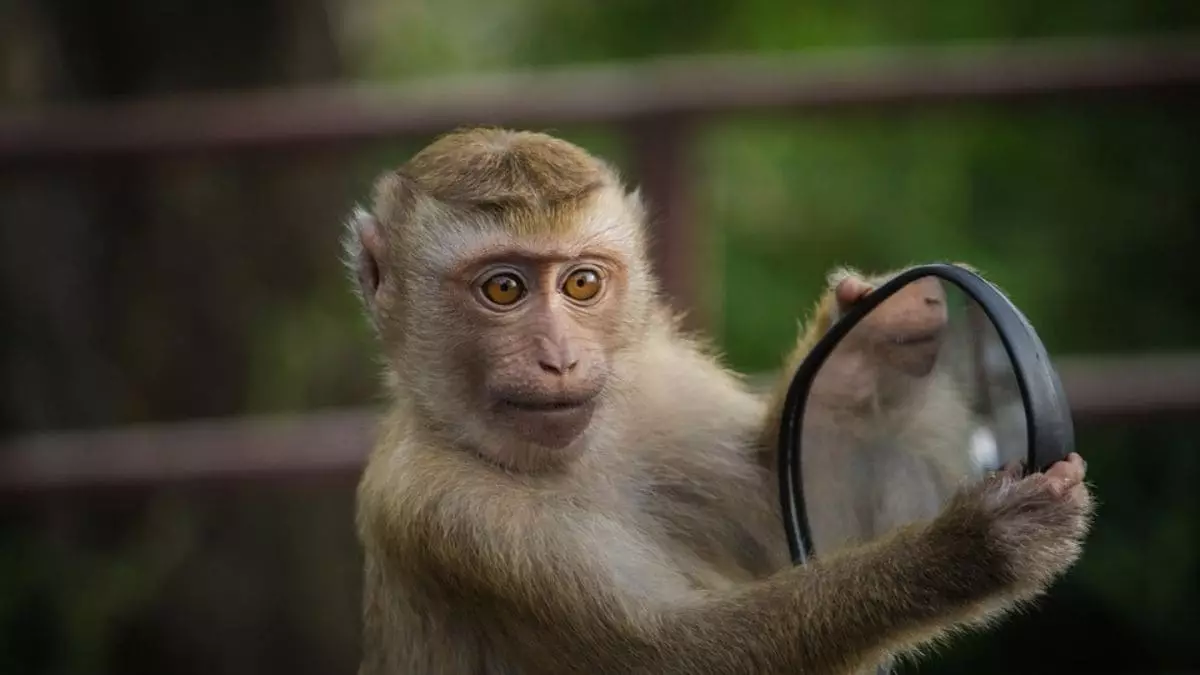Self-awareness is a complex and often debated trait in the animal kingdom. Researchers have long sought to understand its presence, or lack thereof, among various species. The latest findings from a study on chacma baboons (Papio ursinus) conducted in Namibia unveil intriguing insights into the nature of self-recognition in these primates. Observations indicate that while baboons exhibit interest in their reflections, they do not possess self-awareness in the same manner as other species known for this trait.
The study, published in the journal Proceedings of the Royal Society B: Biological Sciences, took place over a five-month period at Tsaobis Nature Park. Here, researchers placed large mirrors near watering holes frequented by two groups of chacma baboons. The central inquiry was whether these baboons could correlate their reflections with their physical bodies. To facilitate this, researchers employed laser dots projected onto the baboons’ faces as a method to test their responses.
While 64% of the baboons touched visible marks on their arms or legs, only a scant 2% reacted when the same marks were placed on their faces in front of the mirror. This disparity raises critical questions about how baboons process visual information and their ability to recognize themselves. Some baboons displayed signs of awareness regarding the dots on their bodies, yet the projection of the laser on their faces failed to elicit a similar reaction. This suggests a lack of understanding that the mirror image and the dot pertain to the same subject: themselves.
Alecia Carter, an evolutionary anthropologist from University College London, emphasized the complexity of self-awareness, noting that assessing such a trait in animals is far from straightforward. Many species, including primates and individuals from other classes of the animal kingdom, have undergone various tests for self-recognition. While species such as chimpanzees and dolphins actively demonstrate reflective self-awareness, the baboons failed to do so.
This finding invites speculation about the evolutionary implications of self-awareness. Can it be argued that self-recognition is an adaptive trait? Baboons thrive in their natural habitat without needing to recognize their reflections. This raises the question of whether the necessity for self-awareness is variable across species, influenced more by environmental demands than by innate cognitive abilities.
The lack of response to the mirror test aligns with previous findings regarding non-ape primates. James Anderson, a primatologist, reiterated that the evidence supports the idea that many non-ape species do not exhibit self-recognition. Interestingly, trained rhesus monkeys have shown some ability to utilize mirrors for self-exploration in laboratory settings, indicating a possible divide based on species experience and environment.
Masanori Kohda, an animal sociologist, provided insights into the baboon’s perception of the laser dot. He suggested that because the dot did not move in coordination with the baboon’s face, these primates might have perceived it as an external entity rather than an indication affixed to themselves. This observation points to another layer of complexity in understanding how animals interpret and interact with visual stimuli.
Psychologist Lindsay Murray’s commentary highlights that self-awareness is not a binary concept, but rather one that exists along a continuum. For instance, only about 65% of children pass the mirror test by the age of two, suggesting that self-awareness develops through experience rather than emerging fully formed. The broader implications here suggest that different species may operate on various levels of self-awareness based on their unique evolutionary paths and ecological needs.
Ultimately, the results from the baboon study expand the discourse surrounding the evolutionary significance of self-recognition. While it is evident that certain species possess this trait, its absence in baboons challenges preconceived notions of consciousness in the animal kingdom. Self-awareness might not be universally pivotal for all species, particularly for those like baboons, who excel in their natural environments without the necessity for self-recognition. This research not only deepens our understanding of animal cognition but also leaves us yearning for further explorations into the complexities of the animal mind.


Leave a Reply